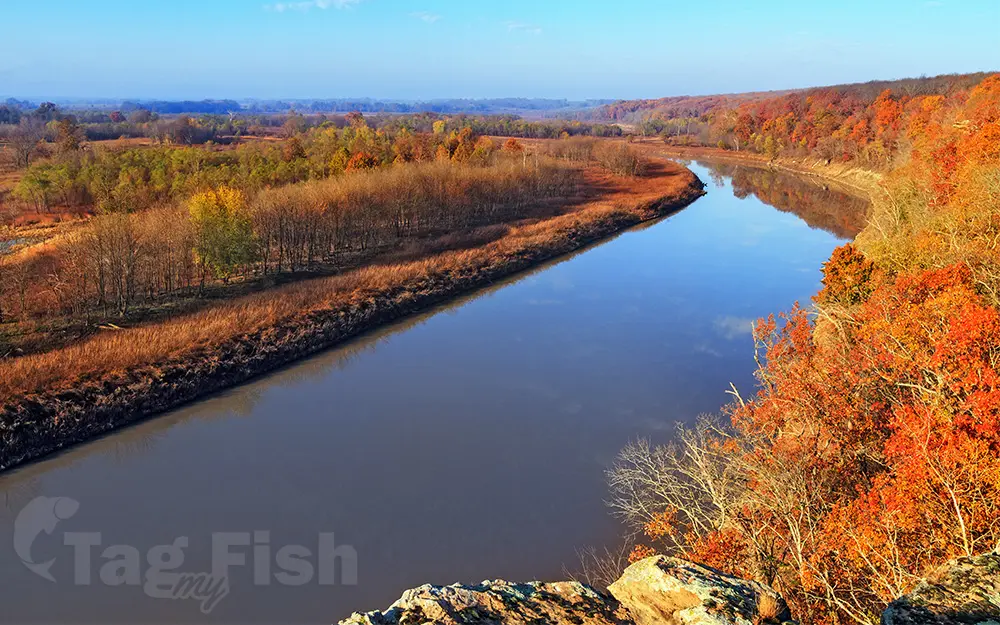Osage River

General data
- Name: Osage River
- Water system: Missouri River
- Water type: River
- Progression: Missouri River -> Mississippi River -> Gulf of Mexico -> Atlantic Ocean -> Planet Earth
- Climates: Subtropical
- Continents: North America
- Countries: United States of America
The Osage River is a 276-mile-long (444 km) tributary of the Missouri River in central Missouri in the United States. The eighth-largest river in the state, it drains a mostly rural area of 15,300 square miles (40,000 km2). The watershed includes an area of east-central Kansas and a large portion of west-central and central Missouri, where it drains northwest areas of the Ozark Plateau. The river flows generally easterly, then northeasterly for the final 80 miles (130 km) where it joins the Missouri River. It is impounded in two major locations. Most of the river has been converted into a chain of two reservoirs, the Harry S. Truman Reservoir and the Lake of the Ozarks. The Osage is formed in southwestern Missouri, approximately 14 miles (23 km) northeast of Nevada on the Bates-Vernon County line, by the confluence of the Marais des Cygnes and Little Osage Rivers; the Marais des Cygnes is sometimes counted as part of the river, placing its headwaters in eastern Kansas and bringing its total length to over 500 miles (800 km). The combined stream flows east past the Schell-Osage Wildlife Area into St. Clair County, widening into a long meandering arm of the Harry S. Truman Reservoir, approximately 40 miles (64 km) long. The lake receives the South Grand River as a second arm of the reservoir from the northwest, as well as the Pomme de Terre River from the south. The two arms of the reservoir join near the Harry S. Truman Dam in central Benton County. Downstream from the Truman Dam, the river becomes the serpentine Lake of the Ozarks, stretching eastward for nearly 92 miles (148 km) to Bagnell Dam in Camden County and southwestern Miller County. Constructed in 1931, the dam collects the Niangua River. Downstream from the dam, the Osage flows freely to the northeast in broad oxbow meanders through forested bluffs, joining the Missouri approximately 15 miles (24 km) east and downstream of Jefferson City.

 English
English
 Spanish
Spanish
 German
German
 French
French
 Serbian
Serbian
 Russian
Russian

